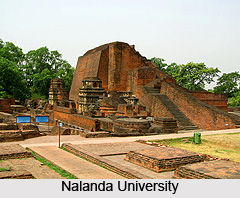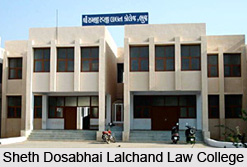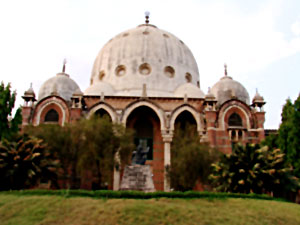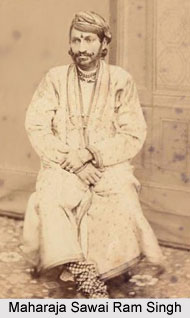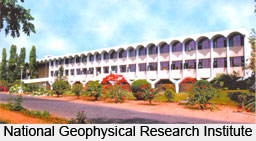 National Geophysical Research Institute or NGRI, a constituent Laboratory of CSIR, is India`s largest Research and Development organization. It was founded in the year 1961 with the objective of carrying out research in multidisciplinary areas of Earth Sciences. This geoscientific research organization was established under the Council of Scientific and Industrial Research (CSIR). It is supported by more than 200 scientists and other technical staff. It is located in Hyderabad, Telangana, India.
National Geophysical Research Institute or NGRI, a constituent Laboratory of CSIR, is India`s largest Research and Development organization. It was founded in the year 1961 with the objective of carrying out research in multidisciplinary areas of Earth Sciences. This geoscientific research organization was established under the Council of Scientific and Industrial Research (CSIR). It is supported by more than 200 scientists and other technical staff. It is located in Hyderabad, Telangana, India.
Research Areas of National Geophysical Research Institute
The institute carries out research on Hydrocarbon and coal exploration, mineral exploration, deep seismic sounding studies, exploration and management of groundwater resources, earthquake hazard assessment, structure of earth`s interior and its evolution (theoretical studies), and geophysical instrument development.
Staff Strength and Facilities of NGRI
NGRI has staff strength of more than five-hundred that includes about 150 highly qualified scientists doing extensive research in Earth Sciences assisted by an equal number of skilled technical staff for data acquisition, data processing and field investigations.
The major facilities offered by NGRI are as follows:
•Mineral Physics Laboratory with high-pressure Diamond Anvil Cell (DAC), ultra high resolution (0.02/cm) double monochorometer, and micro-Raman spectrometer.
•High-pressure laboratory comprising of Keithly electrometer, strain-measuring sensors, universal testing machine (100 tons), and Bridgeman-Birch high-pressure apparatus.
•In-situ stress measurement facility consisting of hydraulic equipment.
•Rock magnetism laboratory consisting of astatic magnetometer, digital spinner magnetometer, alternating magnetic field and thermal demagnetizers, high-field and low-field hysteresis and susceptibility meter.
•Geochemical laboratory consisting of fully automated X-ray Fluorescence Spectrometer (XRF), Atomic Absorption Spectrometer, Inductively Coupled Plasma Mass Spectrometer (ICPMS), and Electron Probe Micro Analyzer (EPMA).
•Geochronology and isotope geochemistry laboratory with facilities for Rb-Sr, Sm-Nd, and Pb-Pb analyses.
•EM, Resistivity, and IP Model Laboratories.
•Continuous Flow Isotope Ratio Mass Spectrometer Laboratory (CFIRMS).
•Helium Emanometry, Heatflow and Radiometry Laboratory.
•Tritium and carbon dating laboratory for groundwater.
•Centralized computing facilities: PC-LAN and an array of Sun Workstations.
•Thermoluminescence (TR) Optically Stimulated Luminescence (OSL) dating facility.
•Absolute Gravity Lab.
•Airborne magnetic and electromagnetic surveys.
Awards of National Geophysical Research Institute
•Won Bronze Icon Award for exemplary performance in ERP 2012.
•Won FAPCCI Award in 2007.
•Won FICCI Award in 2002.
•Won Business Development and Technology Marketing Award (CSIR) in 1997.
•Won Best Technology Development in R & D FAPCCI in 1997.
